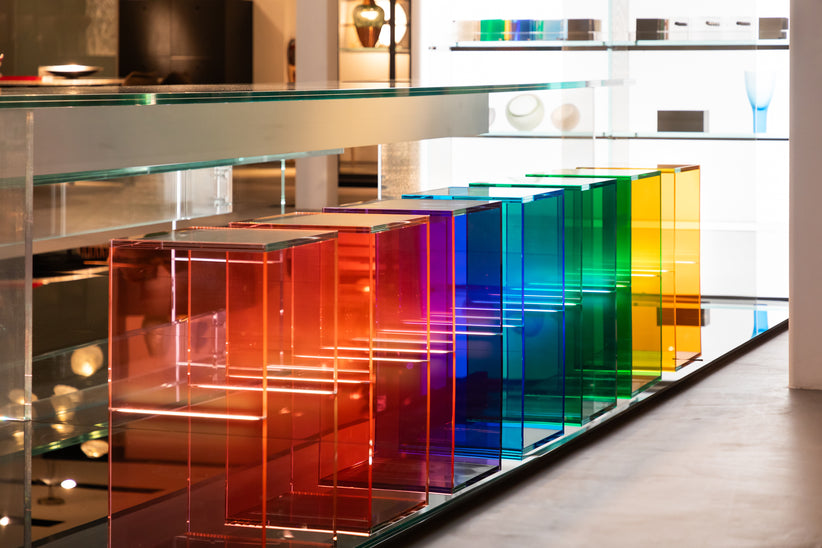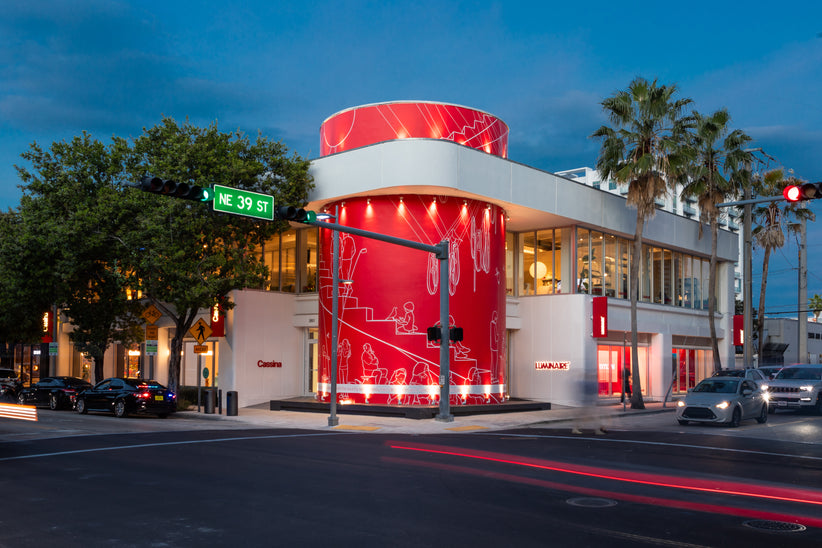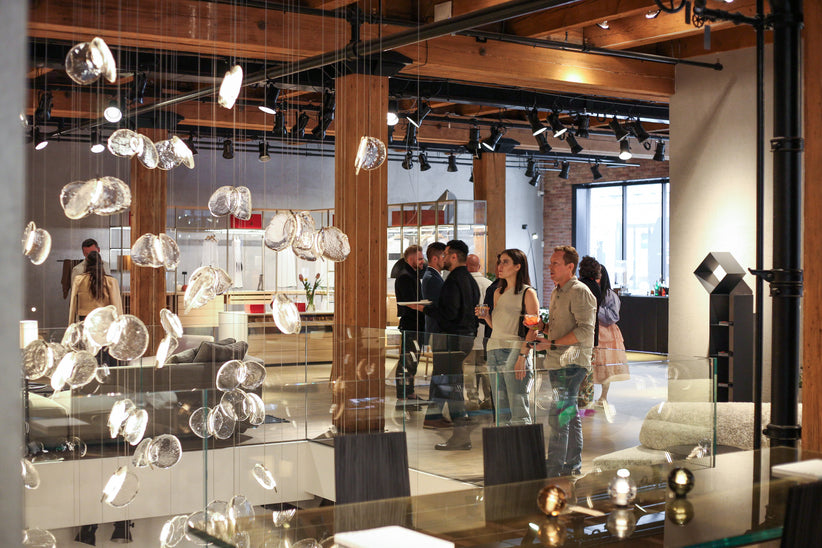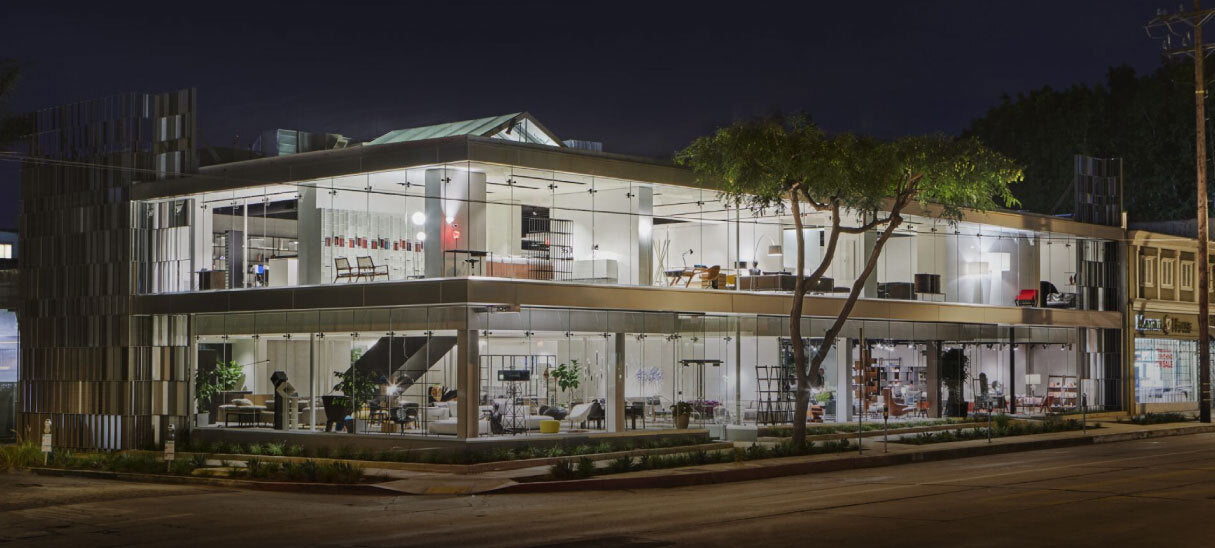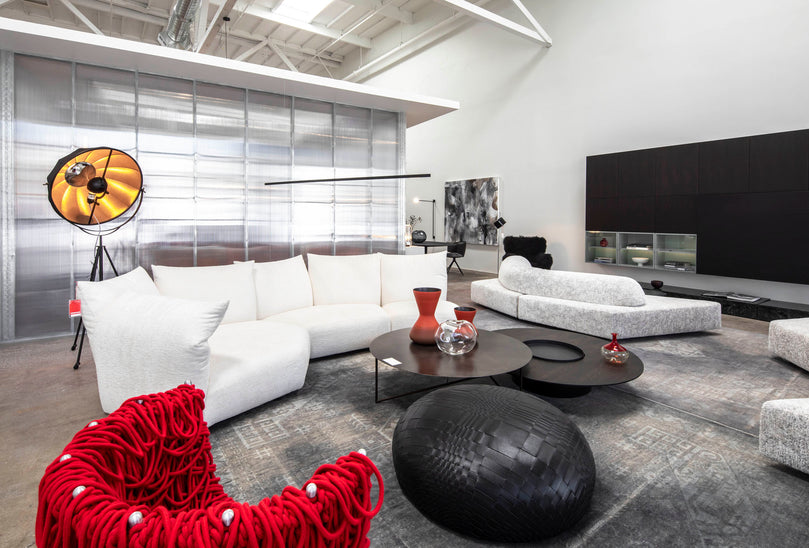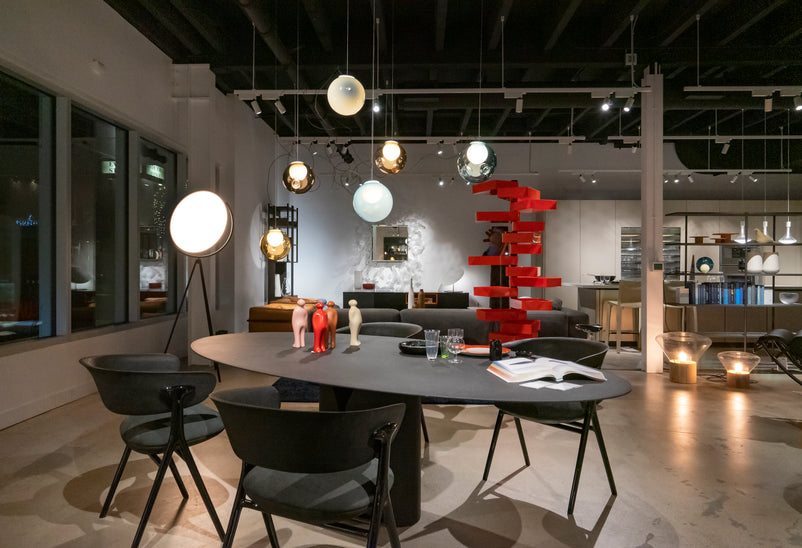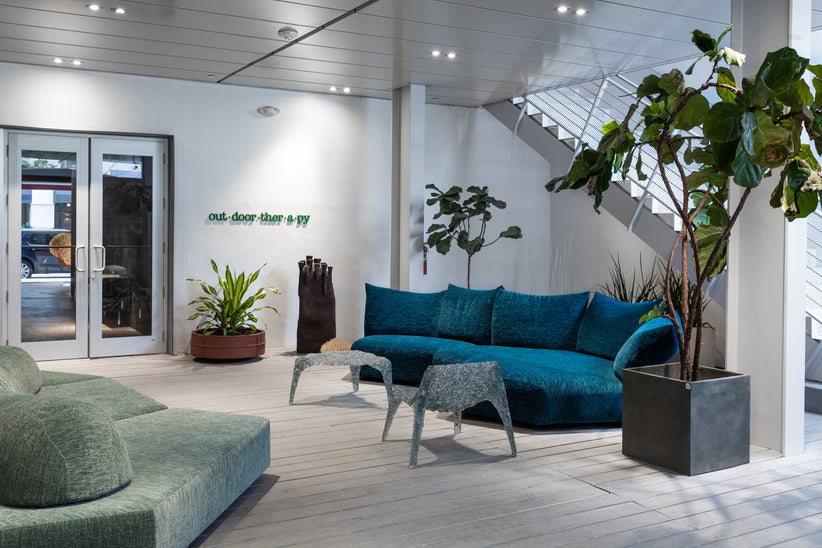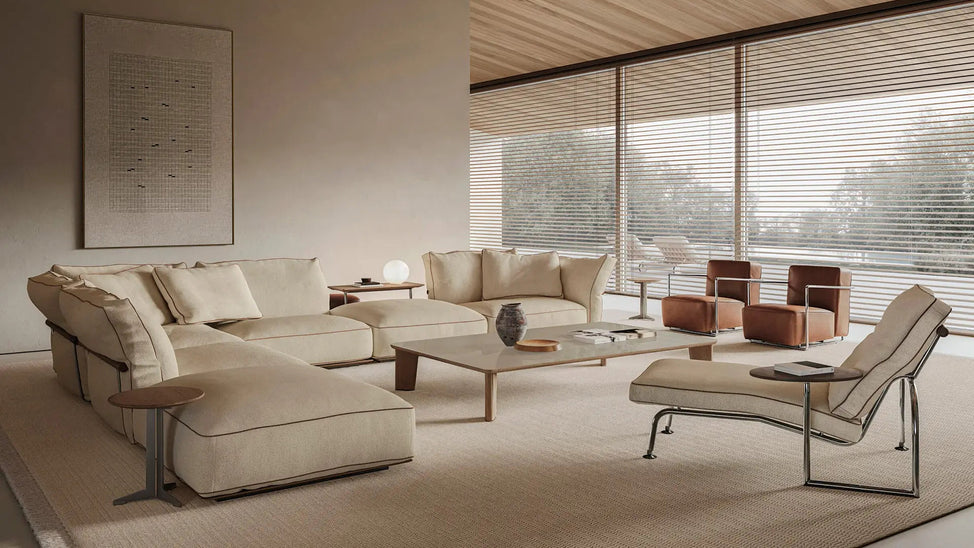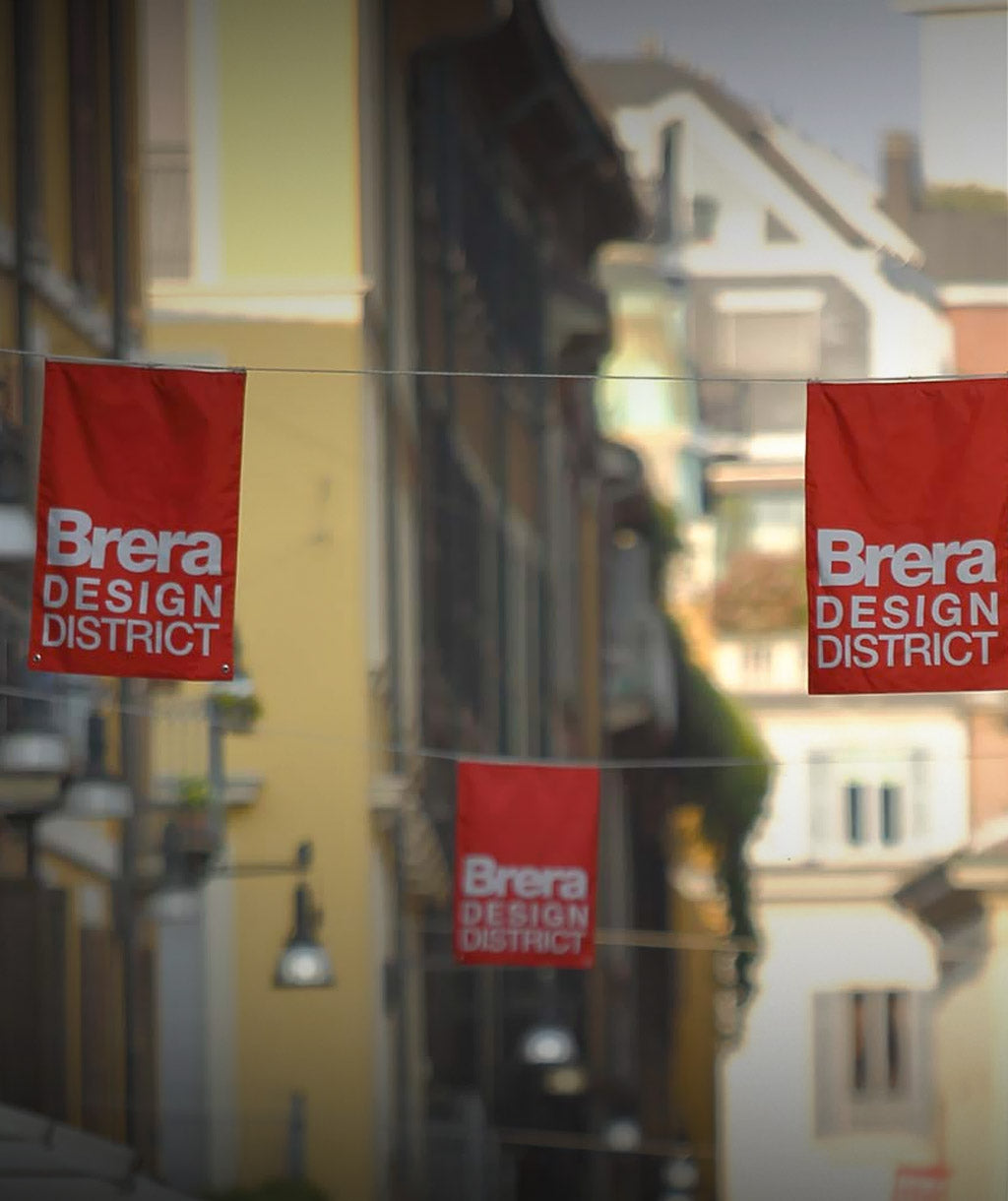Each year, Luminaire travels to Milan for their annual design week to seek out the best in contemporary design from around the world. Exploring both the massive Salone Internazionale del Mobile and the numerous off site events throughout the city at both showrooms and design districts such as Brera, Zona Tortona and Lambrate, we united with our long time partners and collaborators as well as acquainted ourselves with new designers and manufacturers.
With the city cloaked in grey as rain and cold temperatures oppressed the beginning of the week, we welcomed the escalating temperatures and blue skies that occurred as the week passed. Much like the weather, our experience finding new design was at times difficult; with austerity seemingly on the minds of many manufacturers and bold, new products and concepts were seldom found and instead many products were safe updates to designs already in production. However, just as the weather was sure to subside, we too were able to find pockets of brightness and warmth in our journey. Our highlights from the fair include a range of innovative products that took risks as well as presentations that created atmospheres that appealed to the senses.
Our journey began at the Interni Hybrid Architecture and Design show at the University of Milan where several prominent architects and designers created thought provoking sight-specific installations which explored contemporary society and technology. From there, we visited B&B Italia’s flagship showroom on Via Durini in the heart of the city and discovered Naoto Fukasawa‘s latest product for the legendary Italian manufacturer, the Papilio Bed. Echoing the same sinuous curves and embracing design as the rest of the Papilio series, the bed was a welcome addition to the collection. Our first day concluded with a visit to the Triennale di Milano where we encountered the show “Design. The Syndrome of Influence,” a three-part exhibition asking contemporary designers to reflect and interpret the work of historic Italian designers and brands.
Then, with the opening of the fair the next day, we quickly made our way directly to Desalto’s stand to experience Tokujin Toshioka‘s new collection of tables, side tables and chairs. The Element collection offered a refreshingly innovative take on of the most basic typologies of furnitures, reducing the table beyond the typical four legs and instead creating expressive pieces that balanced precariously on one or two angled supports.
We were also impressed by Porro’s stand, styling by Piero Lissoni whose design direction was evident at a variety of stands. Porro’s use of moody lighting and small, residentially scaled spaces was elevated by the high attention to design in both styling and design resulting in an atmosphere that appealed to all senses.
In addition to the Salone Internazionale del Mobile, the biannual Euroluce took place this year where numerous brands showed innovation and creativity not only in technology and materials but in design as well. From Bocci’s first solo showing in Milan who debuted with an architecturally stunning booth to Fontana Arte’s youthful exuberance with a selection of new products from a roster of up-and-coming designers set in a light, airy space, the lighting show immediately provided a welcome relief from the monotony of the fair.
At Flos, we discovered Michael Anastassiades’ String Lights which consisted of spherical lights suspended from black electric wire that follows the lines of walls in a room, highlighting the relationship between light and architecture of a space. Beyond his work for Flos, Anastassiades was present at Euroluce with his own well designed booth flanked in carefully selected woods which warmly reacted to the minimal collection of lights within. It was exciting to see the how Anastassiades’ work has evolved since we first debuted his collection during Art Basel Miami Beach in 2011.
In addition to Euroluce, the annual Design Report Award was held at the Salone Satellite. Through our sponsorship of the award each year, we engage up-and-coming designers while supporting them with much-deserved publicity and funding for future projects. Luminaire is proud to be both the longest supporter and the only US sponsor of these awards.
One morning, outside the fair we had an experience we have never had in our 30-plus years of attending the fair. We met with a revolutionary Italian bicycle manufacturer, Rizoma, and immediately placed an order for several of the stunning carbon fiber bikes right there outside the fair’s entrance.
Outside of the fair, we visited Ingo Maurer‘s space at Spazio Krizia where we enjoyed an inside look at models for Ingo Maurer’s new Broken Egg installation in Inhotim, Brazil. A longtime friend, Maurer spoke with us about his long-held dream to build a broken egg dedicated to light and walked us through the actualization of this soul-inspired project. As always anticipated, his exhibition space expressed his signature playful intelligence and poetic energy.
Another exceptional display of conceptual thought and thorough exploration of atmosphere occurred at Knoll’s “Tools for Life,” a new collection of furniture by OMA, the collaborative practice co-founded by Dutch architect Rem Koolhaas in 1975. Knoll tapped Koolhaas, one of the most provocative thinkers and daring form-makers of his generation, to help mark its 75th anniversary. The collection includes a table with a top that rises and falls at the press of a button, a chair that can be adjusted in the same way and a reception counter made of three swiveling stacked blocks. The avant garde design of the pieces was set within an environment of exaggerated accessories and color stories which helped solidify a singular vocabulary for the objects. The vignettes were further expressed with large video projections that looped slightly subversive views from high-rise windows.
Additionally, in Zona Tortona we experienced Moooi’s well developed installation showcasing their latest products. Fresh off purchasing a majority stake in their company back from B&B Italia, Moooi’s largest showing in Milan to date was a rebirth of the brand of sorts and existed as if to proclaim that the quirky Dutch firm is back and ready to continue working on their innovative product catalog. Transforming a vast space into a series of dramatically lit and expertly styled sets, Moooi displayed new products in a way which was innovative and bold.
Also off site we explored new work by Nendo. At the Dimos Gallery, we happily viewed his newest work for Glas Italia, Deep Sea. Placed in the context of several prototypes for the series, we were able to understand the careful work that goes into the unique tables and bookcases. Further, at Dilmos, we viewed Bottleware, a tableware collection made from recycled Coca-Cola glass contour bottles.
On our final full day in Milan, we ventured back to Paola Lenti’s exhibition “In the Key of Color” at the magical Chiostri dell’Umanitaria. Having visited first in the rain on Monday, our trip back was marked by abundant sunshine and warmth perfectly allowing the perfectly selected vivid hues of both indoor and outdoor furniture shine. The installation featuring new items for the collection was playful and joyful, full of soft and welcoming shapes, while remaining classic and simple.
Alas, this is only a brief highlight of our long trip abroad.
April 2013


